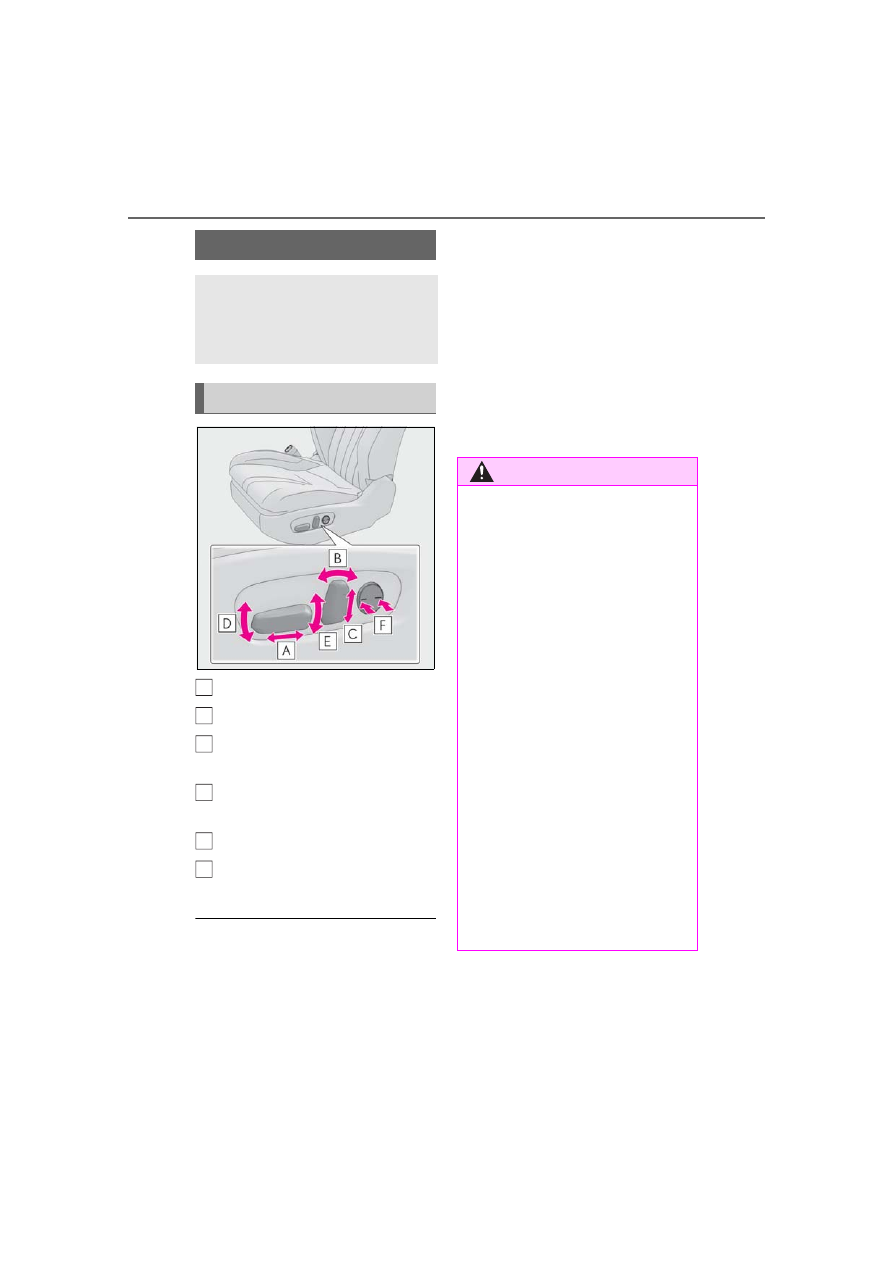LEXUS LC 500 (2019 year). Instruction - part 8

120
3-3. Adjusting the seats
3-3.Adjusting the seats
Seat position adjustment
Seatback angle adjustment
Head restraint height adjustment (if
equipped) (
Seat cushion (front) angle adjust-
ment
Vertical height adjustment
Lumbar support adjustment (if
equipped)
■
When adjusting the seat
●
Make sure that any surrounding passen-
gers or objects are not contact the seat.
●
Take care when adjusting the seat so that
the head restraint does not touch the ceil-
ing.
■
Seat-linked function
●
This function operates when the seat is
moved forward, backward or in the
reclining direction a certain distance or
more.
●
Vehicles with power head restraint:
When the seat is adjusted forward a cer-
tain distance or more, the head restraint
moves down.
●
Vehicles with power head restraint:
When the seat is raised a certain distance
or more, the seat stops and the head
restraint moves down.
Front seats
The seats can be adjusted (longitu-
dinally, vertically, etc.). Adjust the
seat to ensure the correct driving
posture.
Adjustment procedure
A
B
C
D
E
F
WARNING
■
When adjusting the seat position
●
Take care when adjusting the seat
position to ensure that other passen-
gers are not injured by the moving
seat.
●
Do not put your hands under the seat
or near the moving parts to avoid
injury.
Fingers or hands may become
jammed in the seat mechanism.
●
Make sure to leave enough space
around the feet so they do not get
stuck.
■
Seat adjustment
To reduce the risk of sliding under the lap
belt during a collision, do not recline the
seat more than necessary.
If the seat is too reclined, the lap belt may
slide past the hips and apply restraint
forces directly to the abdomen, or your
neck may contact the shoulder belt,
increasing the risk of death or serious
injury in the event of an accident.
Adjustments should not be made while
driving as the seat may unexpectedly
move and cause the driver to lose control
of the vehicle.